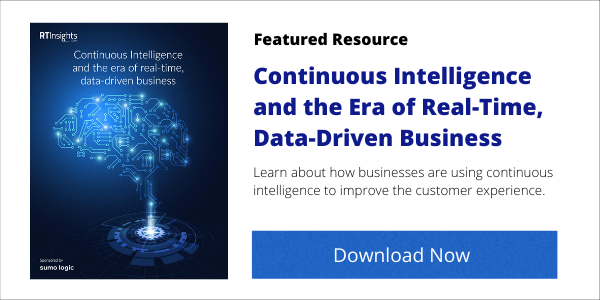
Observability helps digitally transformed organizations make data-driven decisions that reduce operational and security issues as quickly as possible.
Observability, as the name suggests, is the ability to capture and analyze a range of data from across the enterprise to understand how applications and their underlying infrastructure are performing. As companies accelerate their digital transformation efforts, observability has become essential in ensuring that reliability and security objectives are being met.
The myriad hardware and software components in an enterprise automatically generate a torrent of records — event logs, system logs, security logs, and several other types of signals. In the same way that a person’s health can be measured by their blood pressure, cholesterol level, body mass index, and other indicators, the state of application and infrastructure fitness is told in various, disparate numbers.

In the old days of monolithic applications and on-premises environments, tracking this information was relatively easy. That’s not the case in the modern world of cloud computing and interconnected microservices. While the new models make it possible to innovate faster, they also have made enterprises more complex and harder to troubleshoot.
So, what’s a company to do? For a while, many stitched together solutions for gathering and analyzing all this data through complicated implementations and painful integrations. These usually took too much time – a luxury no organization can afford anymore – and frequently didn’t even end up producing the desired outcomes.
Today, more and more companies are recognizing that true observability goes beyond the event logs themselves. What’s crucial is monitoring and analyzing these events, along with KPIs and other data, to produce a deeper level of data-driven, full-stack insight into how applications are behaving. Organizations across industries are taking advantage of new technologies and approaches for achieving this.
Here are four important things to know about observability.
1) AI/ML accelerates the observability journey
Artificial intelligence and machine learning are no longer just a theoretical part of the observability picture – they’re increasingly playing a role in two ways.
First, more companies are applying machine learning signals to established experiences and workflows so they can better navigate the complexities of the cloud environment and leverage data to get a 360-degree view of how applications and infrastructure are performing.
Second, they’re applying observability to AI and ML applications themselves to answer such questions as How do you know if these applications are working as intended? How do you know that your production data hasn’t drifted to a place where models are inaccurate or, worse, have become biased? How are you able to see which features are used by your AI models in production in order to make different decisions?
As enterprises continue to scale their AI deployments, observability must be a critical consideration.

2) Developers are a vital part of the equation
Observability is all about reducing downtime and bolstering security across the entire software delivery lifecycle. And that must start with developers.
Continuous visibility of CI/CD pipelines has become a must-have for development teams in this age of DevOps and “shift left” security. Development teams are increasingly responsible for building, running, and measuring the health of the entire application lifecycle.
Thus, developers need tools that examine data about each stage of the development pipeline and provide real-time, actionable insights. Older, fragmented tools no longer cut it.
3) Lean into open source
Open source has taken on an important role in data collection and, therefore, observability.
Take the area of metrics, for example. Metrics are samples of data collected over time for measuring infrastructure behavior, such as operating system performance, disk activity, application performance, and more. Open standards such as OpenMetrics, OpenTracing, OpenAPM, Open Telemetry, Carbon, and Graphite are useful for helping organizations get their arms around collecting and analyzing this information.
In addition, leveraging open source means being able to collect a wealth of data across the enterprise without having to reinvent or build integrations from scratch. If you do have to build, open source often provides a pluggable framework for getting started quickly.
4) Own your own telemetry
Getting visibility into complex environments can be tricky. Installing proprietary agents and configuring them with your desired business rules is necessary, but it takes time. It also becomes technical debt if you ever decide to switch backend analytics providers.
OpenTelemetry is an open standard designed to provide a vendor-agnostic way of collecting metrics and traces. It’s a potent tool in a cloud-native observability stack.
By choosing to implement Open Telemetry collection, organizations then “own” their collection strategy and can customize it to their heart’s content… knowing that they don’t need to throw it away and start from scratch if they ever decide to swap backends.
Every company should be strongly considering OpenTelemetry as a linchpin in their efforts in data collection and analysis. It is supported by most modern observability vendors, as well as the major cloud providers.
By keeping these four points in mind, organizations can embrace observability as a core building block of digital transformation. In today’s rapidly evolving digital landscape, companies must be able to make data-driven decisions that reduce operational and security issues as quickly as possible. Without observability, achieving that goal is difficult, if not impossible.







